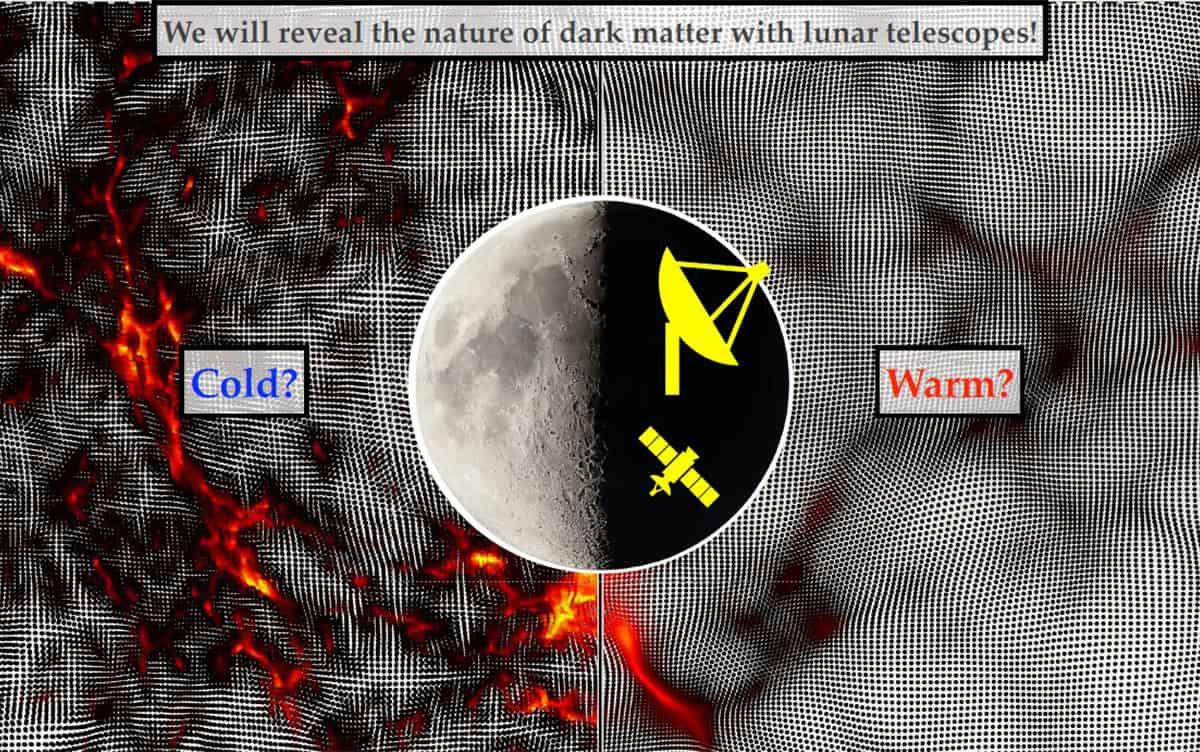Research News
Probing Dark Matter with Lunar Radio Telescopes

Researchers at University of Tsukuba and The University of Tokyo have discovered that radio waves emitted from primordial hydrogen gas in the early Universe contain a "fingerprint" that reveals the properties of dark matter. Theoretical calculations have accurately reproduced the distribution of dark matter and the state of hydrogen gas in the early Universe. Radio observatories planned for construction on the Moon are expected to detect these signals, advancing our understanding of the true nature of dark matter.
Tsukuba, Japan—The Universe was born 13.8 billion years ago during a rapid expansion known as the Big Bang. Around 400,000 years later, it entered a period known as the "Dark Ages," which lasted for about 0.1 billion years until the first stars and galaxies began emitting light. During this time, hydrogens atoms are thought to have emitted faint radio waves at a wavelength of 21 cm, which likely carry important clues about the beginning of the Universe.
Through numerical simulations, researchers at University of Tsukuba and The University of Tokyo predicted the intensity of the 21-cm radio signal in different models of dark matter, the mysterious invisible substance that comprises around 80% of the matter in the Universe. By reproducing the distribution of gas and dark matter in the early Universe on supercomputers, the team calculated the intensity of the radio waves during the Dark Ages with unprecedented precision.
The results imply that hydrogen gas in the dark ages produced a characteristic signal of about 1 millikelvin (one-thousandth of a degree) in the brightness temperature of sky-averaged radio emission. Crucially, dark matter is expected to produce variations of similar magnitude in this signal. Observing the global signal across a broad frequency band (~45 MHz) could therefore reveal the mass and velocity of dark matter particles.
Several lunar missions, including Japan's Tsukuyomi Project, are now aiming to build radio telescopes on the Moon. If such telescopes can detect this faint signal, they will help unlock the mystery of dark matter.
###
H.P. was supported in part by grant NSF PHY-2309135 to the Kavli Institute for Theoretical Physics (KITP). N.Y. acknowledges financial support from JSPS International Leading Research 23K20035. R.B. and N.Y. acknowledge JSPS Invitational Fellowship S24099.
Original Paper
- Title of original paper:
- The Signature of Sub-Galactic Dark Matter Clumping in the Global 21-cm Signal of Hydrogen
- Journal:
- Nature Astronomy
- DOI:
- 10.1038/s41550-025-02637-0
Correspondence
Researcher Hyunbae Park
Center for Computational Sciences, University of Tsukuba
Project Professor YOSHIDA Naoki
Kavli Institute for the Physics and Mathematics of the Universe (Kavli IPMU, WPI), The University of Tokyo Institute for Advanced Study (UTIAS), The University of Tokyo
Related Link
Center for Computational Sciences







